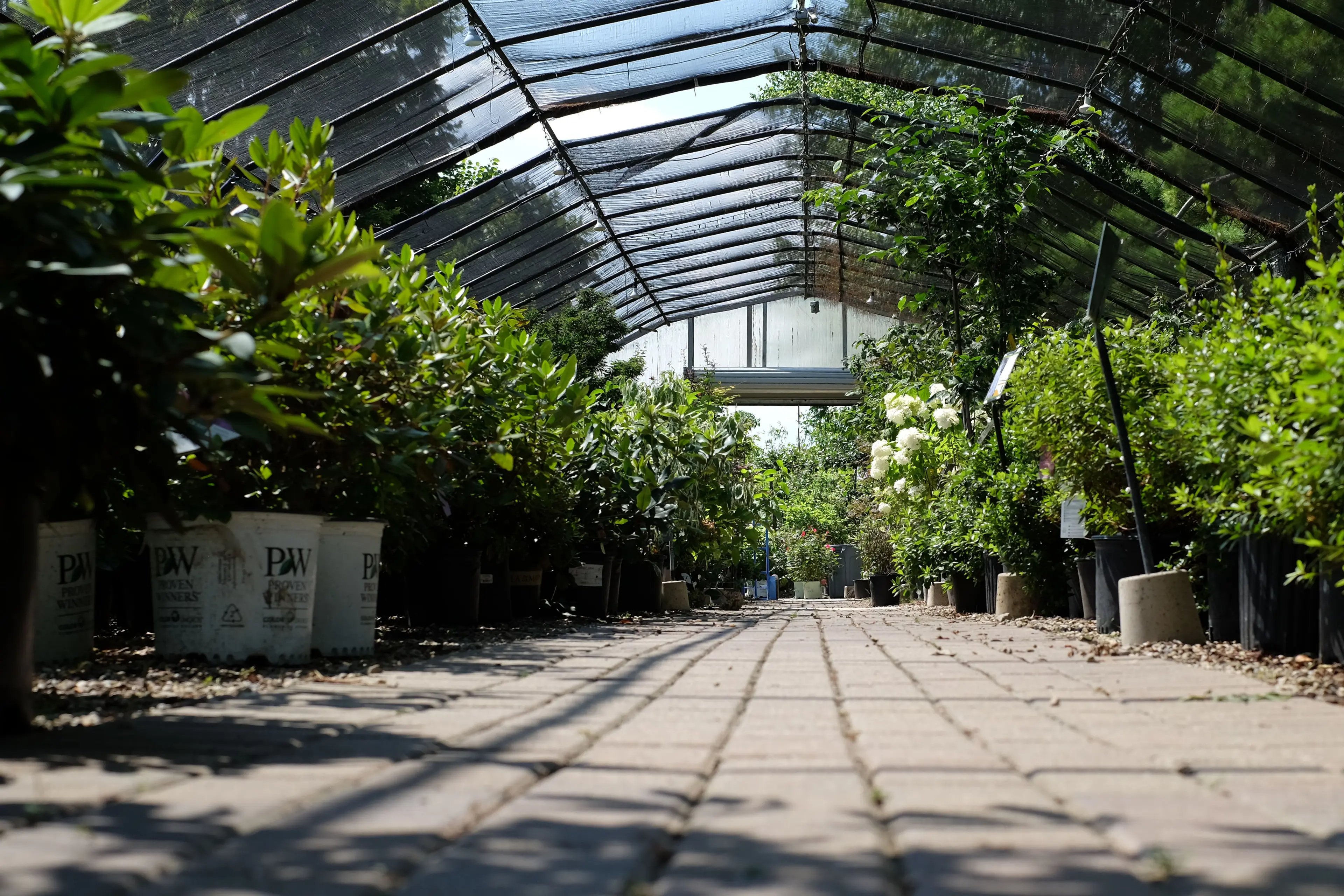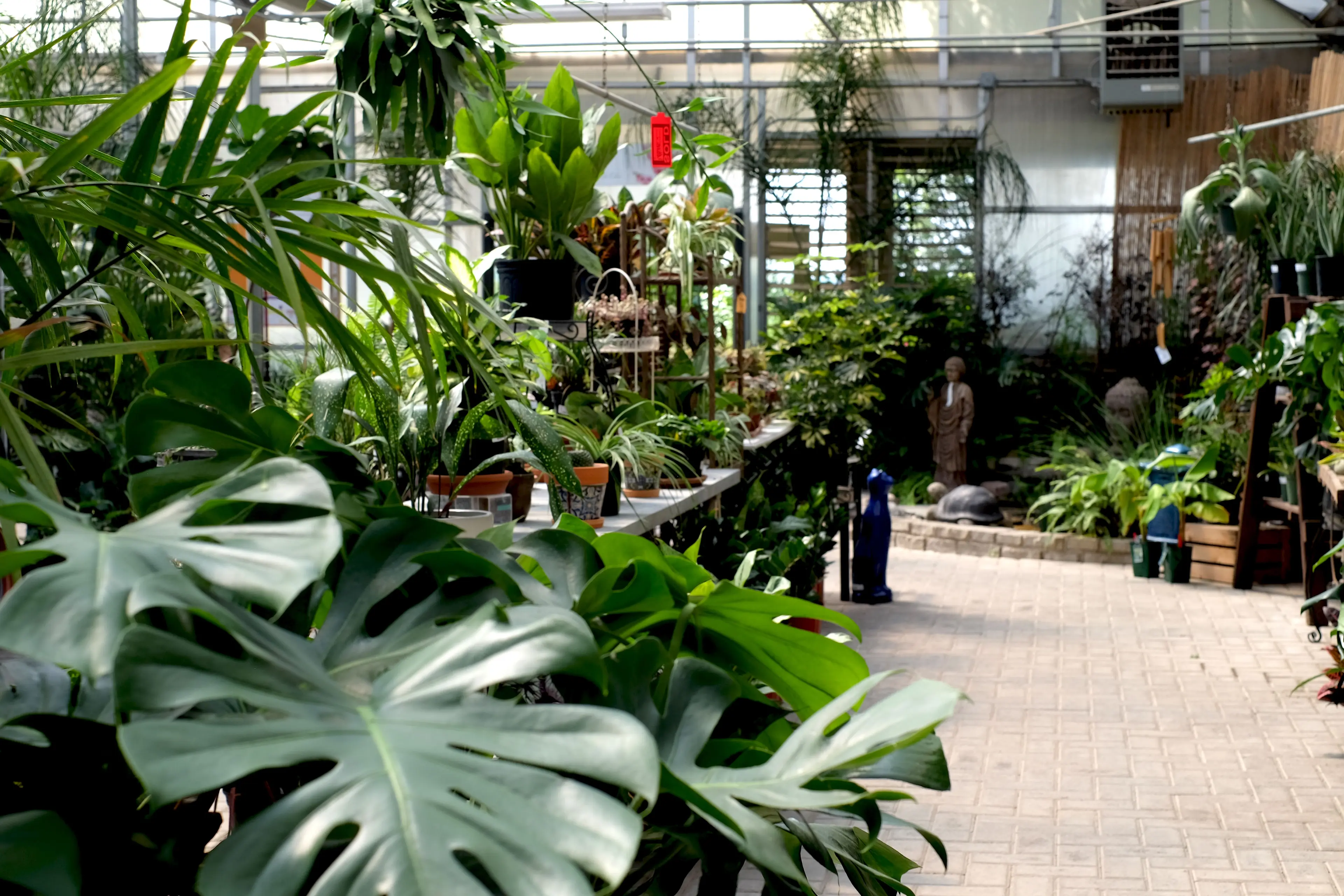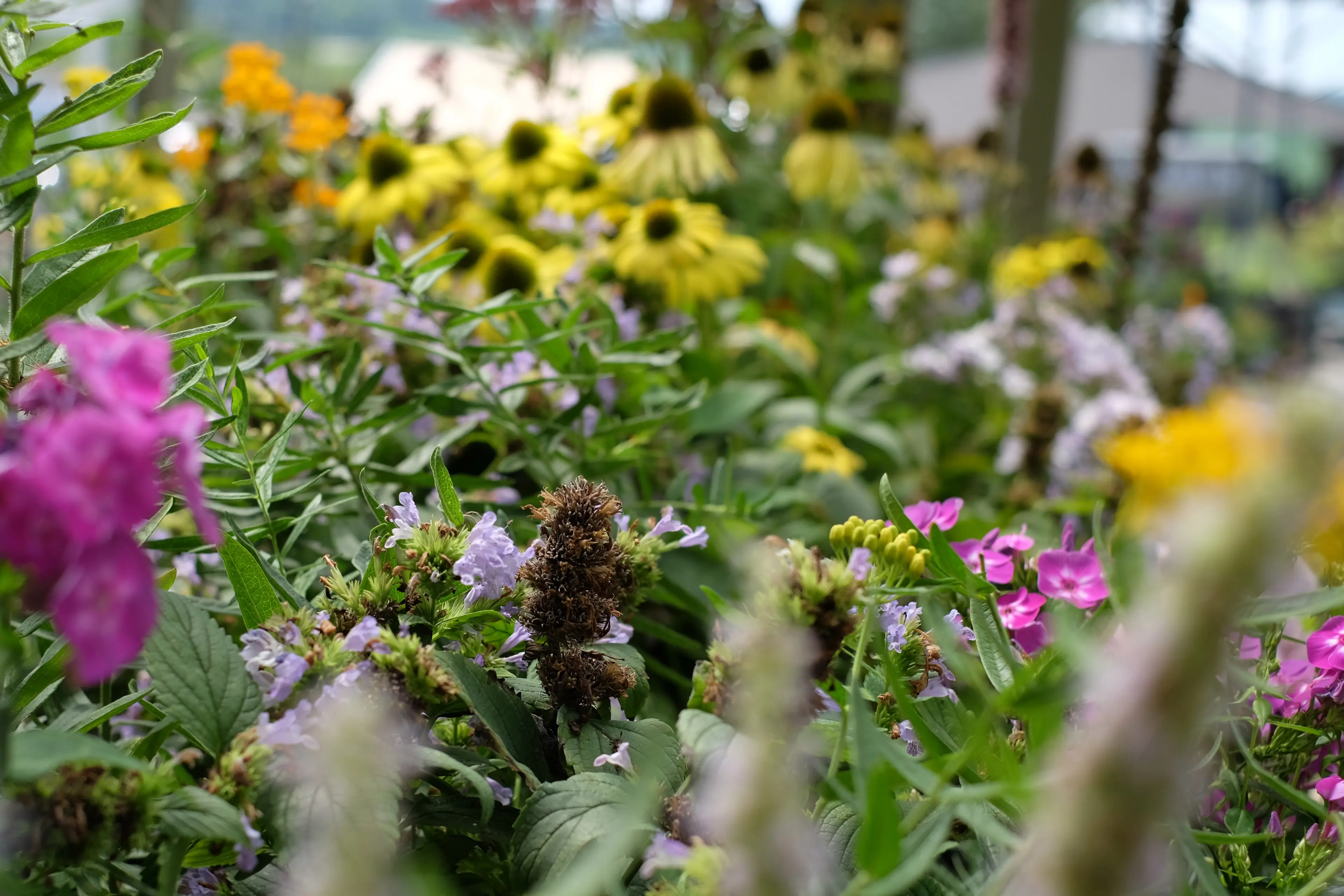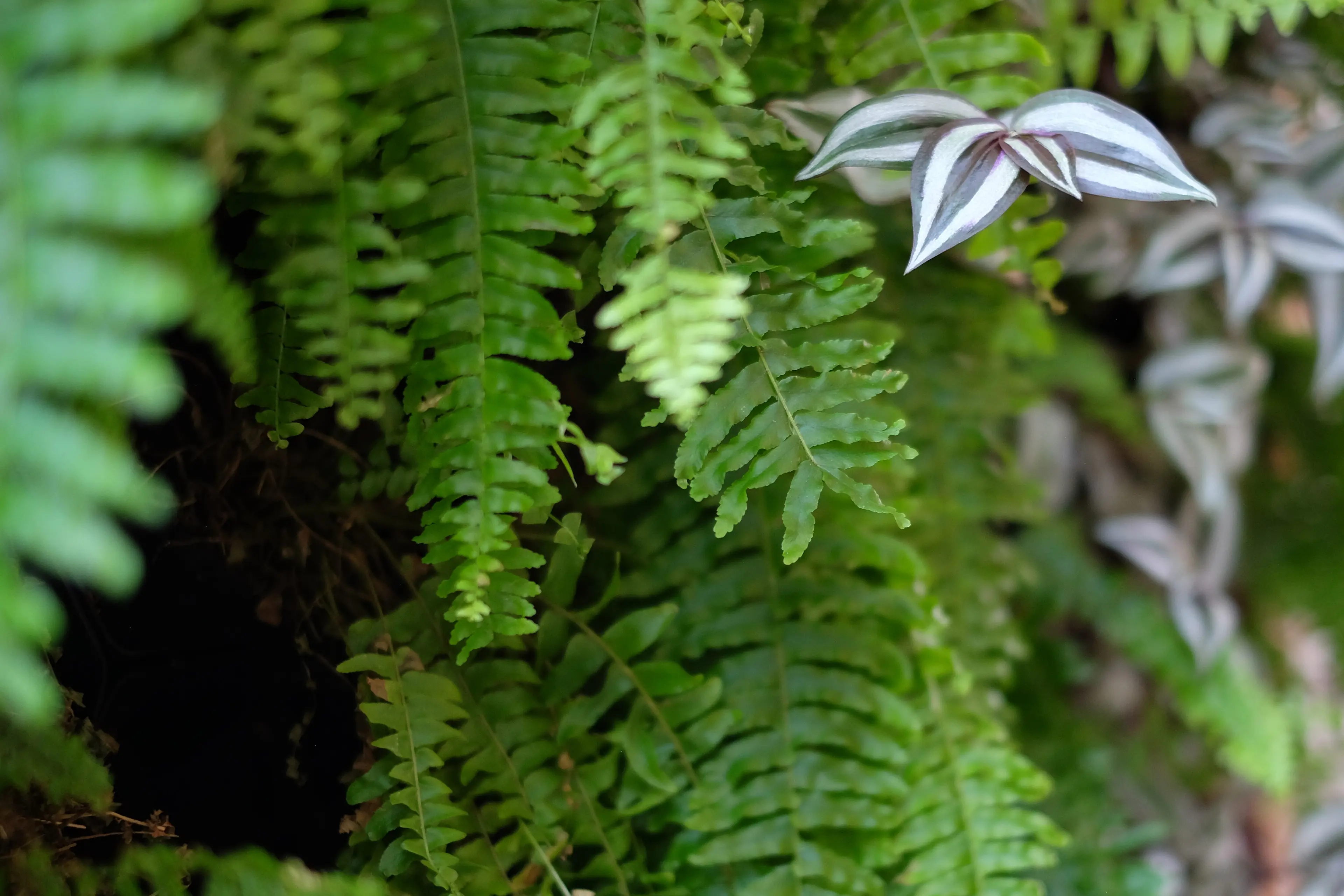







Garden Center

Houseplant Maintenance: Identifying and Treating Common Pests

It's happened to all of us: we get home and unwrap the new philodendron we scored from our local greenhouse, only to find it's got the makings of webbing, honeydew, or leaf damage from unwanted pests.
Usually, your local greenhouse isn't the culprit for the poor conditions that lead to plant infestations. Large scale grow-ops in tropical places like Florida, where hundreds of thousands of plants are cultivated in massive greenhouses and shipped nationwide for retail sale, are usually so massive that even blanket pest control can't guarantee that all plants are bug-free.
Certain bugs, like spider mites, reproduce so quickly and have so many breeding cycles per season, that they can even become resistant to certain pesticides, limiting the kinds of treatments growing operations can apply and sometimes even requiring much more toxic solutions. Gross!
If you end up bringing home an infested plant, fret not. There are lots of ways to identify and treat infestations at home, many of them very simple if you have the time to dedicate to the project!
Let's go over some common houseplant pests, what their infestations look like, and how you can combat damage before it's too late!
Spider Mites
These little (literally) bugs are members of the arachnid family, making them relatives of the house spider, but without the benefit of eating other insects. Instead of feeding on insect prey, spider mites prefer to bite onto foliage plants and suck out the fluids from inside.
Because they're about the size of the very tip of a freshly sharpened pencil, these little bugs can be hard to spot until they've started to cause damage to your plant leaves. If your leaves start to have tiny red, black, or brown spots, particularly near the central leaf vein, you might have unwanted spider mites inhabiting your plant.
Take a clean sheet of white paper and hold it beneath the affected leaf. Tap on the top of the leaf and the tiny bugs will fall onto the paper, where you'll see them scatter.
Another classic indicator of spider mites is by their webbing. Spider mites will create little web-like nests between leaves and around stems. Don't confuse normal spider webs with mite webbing, though! While ordinary spider webs have obvious individual strands and will resist you when poked, mite webbing is not at all strong like spider webbing, and when touched, will often stick to whatever touched it and pull apart like cotton candy. (Really, really gross cotton candy, that is.)
Treating Spider Mites
When treating spider mites, there are a few options to consider.
- Humidify the area.
- Spider mites thrive in hot, dry areas with very little humidity. Adding a humidifier to your setup will prevent infestations from beginning, and can slow down reproductive rates in combination with other treatments.
- Use horticultural (hort) oil or neem oil.
- When diluted, both hort oil and neem oil are very effective natural remedies for spider mites. Both have compounds that are repulsive to many pests.
- Simply dilute your oil in warm water with a drop of soap to help emulsify the concoction and spritz or wipe down leaves by hand with it. Continue weekly until visible signs of infestation cease.
- Try a bio-insecticide.
- Bio-insecticides use bacteria and fungi to combat pests naturally, without chemicals or toxins that can otherwise harm people and pets.
- Arber, a product we carry at Green View, boasts clinical success when applied regularly to both treat and prevent infestations.
- For use with spider mites, remove all visible signs of infestation with a cloth, q-tip, or stream of warm water. Then, apply diluted insecticide to foliage and/or the soil for a systemic treatment.
Scale
These pests are one of the trickiest to eradicate (and a personal sworn enemy of greenhouse employees everywhere!). Scale insects are a wide range of sap-sucking insects that secrete a shell over the top of their soft bodies as they feed, making topical treatments virtually useless. Their shells can become hard enough to require rocks to crack them if left unchecked for long enough, so catching scale while it's young is the best way to keep yourself from a full-blown infestation.
The most common sign of scale infestation is honeydew -- a deceptively named fluid that the insects excrete after sucking sap from your plant's foliage and stems. In other words, it's the bugs' excrement. You may notice honeydew on the leaves of your plant, plant stands, or even windows, appearing like a splatter of clear paint. The honeydew itself is removable with warm water, but the scales themselves can be harder to spot even once the honeydew appears.
Some species of scale are nearly invisible when feeding from host plants with bark or leaves colored similarly to them. Ficuses are especially susceptible to scale because of their flaky, peeling bark. Dieffenbachia, bananas, and single-stem philodendrons share qualities that make them likely to harbor scale long-term, as well.
Treating Scale
Try any combination of these approaches to treat your scale infestation fast.
- Use a cotton swab and isopropyl alcohol to remove the bugs one by one.
- For smaller specimen plants (i.e. that can be held and rotated comfortably in one hand or on a tabletop), this method is practical and feasible. Choose a point on the plant and carefully examine each part of it (stems, tops and bottoms of leaves) and rotate clockwise, removing bugs as you spot them.
- In a small glass or plastic container, mix alcohol with water at a 1:1 ratio and use cotton swabs or a stiff paintbrush to dislodge and wipe away the insects.
- Try blasting away the bugs with one of your garden hose's more powerful settings.
- For scale issues on larger plants (like dieffenbachia, tree-form ficuses, palms, etc.) this method can help wipe out large numbers of scale before other treatments are implemented.
- Lay the potted plant's container on its side carefully. Use a hose setting with even pressure, such as "fan" or "full", and slowly work your way from the container to the tip of the plant, making sure to cover particularly infested areas more than once.
- Consider a systemic treatment, such as a bio-insecticide.
- Not only will this disrupt the insects' egg cycles, but it makes the plant's sap toxic to feeding pests. Repeated foliar and topical applications will remove infestations over time.
Thrips
These pests are nearly invisible to the untrained eye, but appear like a tiny, dancing grain of rice usually walking along your plant's central leaf veins. There are many varieties of thrips, with different species native to and adapted to the climates of every continent except Antarctica. Because of their ability to adapt and develop treatment resistance, thrips are difficult to eradicate, and have become more common among houseplants in recent years thanks to increased demand and national shipment patterns.
If you're noticing small, irregular dots in clusters on the leaves of your foliage houseplants (such as philodendrons, ficuses, pothos, monstera, and other large-leaved plants, use a magnifying glass to search for thrips.
Because these bugs lack the hard shell that scale has, topical and foliar treatments are much more effective at eradicating these tiny pests. Repeated applications of a topical treatment is your best bet for ridding your windowsill of these bugs for good.
Treating Thrips
- Use a granular or liquid systemic treatment to disrupt feeding cycles.
- Thrips feed on the sap of your houseplants, and their feeding patterns can result in some unsightly and unhealthy foliage, which is troublesome because the plants they tend to prefer are prized for their large, shiny foliage.
- By using a granular or liquid systemic treatment regimen, you can disrupt the feeding and breeding cycles of these bugs.
- Apply a topical insecticide spray, such as neem oil, hort oil, or bio-insecticide.
- The soft bodies of thrips are susceptible to sprayable treatments, unlike other pests. Repeated applications of topical treatments will eventually eradicate these pests.
Mealy bugs
Scale and mealybugs are actually cousins, which sort of makes sense: while scale secrete a hard shell that protects them against predators, elements, and treatments, mealy bugs secrete a waxy, fuzzy coating that repels water and oils, making topical applications similarly tricky to implement when you notice them on your plants.
Mealy bugs appear as fluffy white clusters on your plants. These sap sucking insects are notoriously hard to erase from your potted plants because the reproducing males live in the potting media (and nooks and crannies in your plants' pots), not on the foliage -- so topical applications only won't actually eradicate all of the bugs.
Mealy bugs are indiscriminate when it comes to food sources, feeding on everything from pothos and philodendrons to cacti and succulents. Fortunately, treatments for the other pests listed here for scale will also treat mealy bugs. But, just to recap:
- Use a cotton swab and a 1:1 isopropyl alcohol/water mixture to pick off the clusters one by one.
- This method is particularly useful when removing mealy bugs from cacti and succulents, where spines and tightly clustered leaves can make hosing and picking difficult.
- A paintbrush is particularly useful in this case as well.
- Use a topical treatment, such as neem/hort oil or a bio-insecticide.
- One tip for mealy bugs that is different: you must be willing to repot your plant entirely, including:
- Wash and sterilize the pot where the infestation was
- Wash and treat the plants roots, as some varieties of mealy bug live entirely in the root system
- Use new, sterile potting media when repotting the plant
- Continue systemic/topical treatments even after repotting to guarantee eradication
What does Green View do to help prevent me from introducing pests to my collection?
Fret not about common houseplant pests. There are a wide variety of treatments available to help put your fears at ease should the worst happen, but you can also rest assured that Green View takes measures to control pests before you ever take your new plant home.
When large shipments of tropical plants arrive, often before they are even out of their compartmentalized boxes and tagged for purchase, our greenhouse staff applies a non-toxic neem oil spray to the foliage and soil to immediately nip potential infestations in the bud. If, while in our care, bugs are noticed, plants are quarantined and treated before being introduced to the sales floor.
We take pride in providing beautiful, healthy houseplants at our greenhouses and our helpful, knowledgable staff is more than happy to help with pest control questions and recommendations.
As always, thank you for reading, and we hope to see you soon!